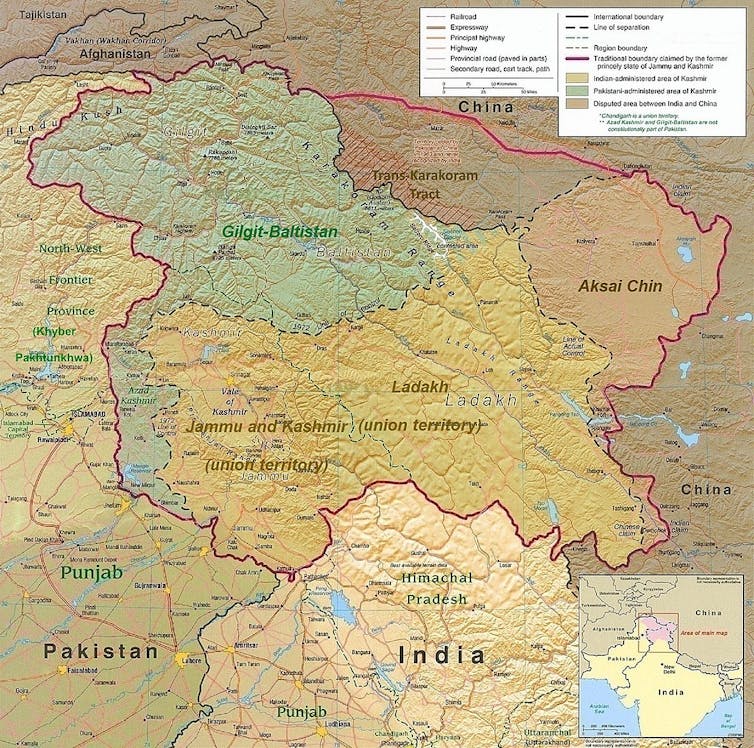
Upgrade to High-Speed Internet for only ₱1499/month!
Enjoy up to 100 Mbps fiber broadband, perfect for browsing, streaming, and gaming.
Visit Suniway.ph to learn
India has launched military strikes against a number of sites in Pakistan and Pakistan’s side of the disputed region of Kashmir, reportedly killing 26 people and injuring dozens more. India claimed the attacks were on terrorist infrastructure, but Pakistan denied this, and said these were civilians.
India says another ten people on the Indian side of the Kashmir region have been killed by shelling from Pakistan in the same period.
The exchange comes two weeks after a terrorist attack in Kashmir killed 26 people. The group Resistance Front (TRF), which India argues is a proxy for the Pakistani-based terrorist group Lashkar-e-Taiba, claimed responsibility for the attack.
India claimed that Pakistan had indirectly supported the terrorist attack, but Pakistan vehemently denies this.
The escalating conflict between two of the world’s major military powers has the potential to destablise Asia and beyond. Already, many countries around the world, including the UK, France and Russia, have made public their concerns about what happens next.
How do India and Pakistan’s militaries compare?
India is ranked as one of the world’s top five military nations by Military Watch magazine and Pakistan is ranked ninth. Both countries have nuclear weapons.
Overall, India is considered to have the military edge with a bigger and more modern military force, while Pakistan has a smaller and more agile force that has been primarily focused on defensive and covert activities.
While neither country has used nuclear weapons in a conflict, there are always concerns that this norm may be broken. Both countries are nuclear powers with India holding 180 nuclear warheads, and Pakistan possessing about 170.
Though India has a “no first use” policy, which it claims means the country would never use nuclear weapons first, there have been signs it is reconsidering this policy since 2019.
Pakistan has never declared a no first use policy and argues that tactical nuclear weapons are important to countering India’s larger conventional forces.
The concern is that even if a small nuclear exchange were to take place between the two countries, it could kill up to 20 million people in a matter of days.
Why are the countries fighting over Kashmir?
Kashmir has been a source of tension and conflict even before India and Pakistan gained independence from the British empire in 1947. Originally the Muslim-majority Kashmir was free to accede to either India or Pakistan.
While the local ruler (maharaja), Hari Singh, originally wanted Kashmir to be independent, he eventually sided with India, leading to a conflict in 1947. This resulted in a UN-mediated ceasefire in 1949 and agreement that Kashmir would be controlled partly by Pakistan and partly by India, split along what’s known as the Line of Surveillance (or Line of Control).
As Kashmir is rich in minerals such as borax, sapphire, graphite, marble, gypsum and lithium, the region is strategically important. It is also culturally and historically important to both Pakistan and India.
Due to the region’s significance and disagreement over sovereignty, multiple conflicts have taken place over Kashmir, with wars erupting in 1965 and 1999. Tensions were renewed in 2016, after 19 Indian soldiers were killed in Uri, on the Indian side of Kashmir. India responded by launching “surgical strikes” across the Line of Control, targeting alleged militant bases.
Then in 2019, a bombing in Pulwama (again part of the Indian-administered Kashmir) that killed more than 40 Indian paramilitary personnel led to Indian airstrikes in Balakot which borders Kashmir. This was the first action inside Pakistan since the Indian-Pakistani conflict in 1971 and again led to retaliatory raids from Pakistan and a brief aerial conflict.
 A map of the Kashmir region.
A map of the Kashmir region.CIA, CC BY
These past conflicts never intensified further in part because India applied a massive diplomatic pressure campaign on the US, the UK and Pakistan, warning against escalation, while Pakistan showed a willingness to back down. Both sides as nuclear powers (India gained nuclear weapons in 1974 and Pakistan in 1998) had an understanding that escalating to full-scale war would be incredibly risky.
What will happen next?
The question is whether or not cooler heads will prevail this time. The strikes by India, part of Operation Sinhoor, were met with mass approval across many political lines in India, with both the ruling Bharatiya Janata party (BJP) and the opposition Congress party voicing their support for the operation.
This helps Modi gain more backing, at a time when his popularity has been falling. Modi and the BJP suffered a shocking result in the 2024 election, losing 63 seats out of 543 seats and falling short of a majority in the Lok Sabha (lower house of parliament).
Under Modi, India has been rapidly becoming more autocratic, another source of concern as such countries are more likely to take risks when it comes to conflict. As power becomes increasingly personalised and dissent is repressed, would-be autocrats may be more likely to take on bold moves to garner more public and elite support.
Pakistan may also have reason to respond with more force to India’s recent attack than in the past. Pakistan’s powerful military has often stoked fears of a conflict with India to justify its enormous military budget. Regardless of the outcome, it needs a success to sell to its domestic audience.
Pakistan has been de facto led by its military for decades, which also makes it more likely to engage in conflict. In spite of intervals of civilian rule, the military has always held a lot of power, and in contrast to India (where there is a wider role for a civilian minister of defence), the Pakistani military has more influence over nuclear and security policy.
Both military regimes and multi-party autocracies may see conflict as a way of gaining legitimacy, particularly if both regimes think their political support is unravelling.
This most recent escalation is also significant because it is the first time in the Kashmir conflict that India has struck at Punjab, considered the heart of Pakistan. Pakistan will face internal pressure to respond, settle the score and restore deterrence.
Both sides have been resolute in not losing an inch of territory. The question is how quickly diplomatic pressure can work. Neither India nor Pakistan are engaged in security dialogue, and there is no bilateral crisis management mechanisms in place.
Further complicating matters is that the US’s role as a crisis manager in south Asia has diminished. Under Donald Trump, Washington cannot be counted on. This all makes deescalating this conflict much more difficult.
![]()
Natasha Lindstaedt, Professor in the Department of Government, University of Essex. This article is republished from The Conversation under a Creative Commons license. Read the original article.

 1 month ago
120
1 month ago
120



